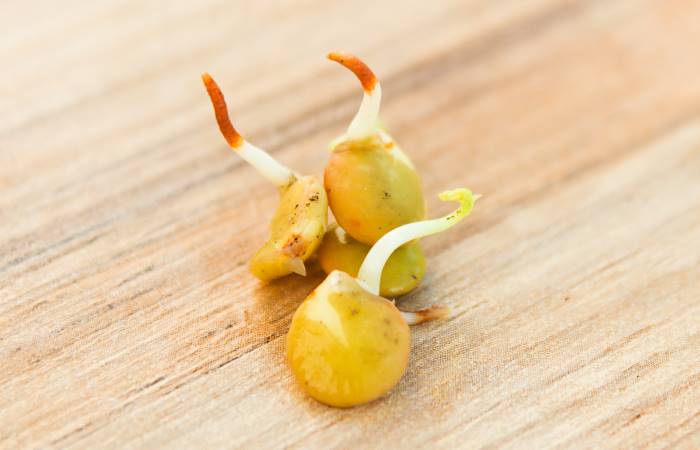Planting seeds is exciting, but waiting for them to sprout is not.
In this guide, you’ll have a better grasp of what affects seed germination time, when to expect your seeds to sprout, and how to help them germinate successfully!

How Long Does It Take For A Seed To Germinate?
It takes about two weeks for most seeds to germinate, while other seeds can take much longer. Seeds should sprout growing within a month of planting when sown in the right conditions. If you don’t see sprouts, then you need to determine the cause.

What Affects Germination Time?
Here are the top factors that affect the germination time of seeds:
- Temperature
- Age
- Light
- Water
- Genetic traits
- Oxygen levels
- Soil structure
Related | What To Do If Seeds Don’t Germinate
Temperature
Temperature plays a huge role in triggering seed germination, so vegetable gardeners need to follow seasonal planting schedules for optimal crop production.
Some seeds may only require temperatures to reach 45-50°F before sprouting to begin, while others won’t start until it gets 75°F.
Failure to provide the right temperature doesn’t mean a seed won’t germinate, but it lessens the chances dramatically.
Age Of Seeds
Old seeds have much more difficulty sprouting for two reasons.
First, the seed casing can become too hard to absorb any water necessary for germination to begin.
Second, the stored food inside the casing also dries out and can become unusable no matter how much water it encounters.
Seed packet expiration dates help avoid the frustration of trying to grow viable plants from old seeds. Only sow seeds from the current year for best results.
Light
Seeds need light, or specifically the white and red-spectrum wavelength rays, to trigger germination. The level of light each species of seed needs to germinate varies greatly.
Seed packet instructions or online research should help you quickly find the proper light conditions necessary for a particular plant seed to germinate as some need full sun, while others need shade.
Water
Water triggers germination as a seed absorbs water to activate the enzymes. The process stimulates sprouting, which is why seeds lay dormant during dry weather conditions.
The enzymes break down the “food” stored within the seed for energy used first to grow a root.
Once the root pops out, it procures the necessary moisture and nutrients from the soil and what material is left stored in the seed to grow a shoot and cotyledons that will form the first leaves of the plant that allows the plant to use photosynthesis to gather energy from the sun..
Genetic Traits
A quick look at the back of different vegetable seed packets shows germination times ranging from three to 30 days, which many people may find surprising.
The reason the sprout rates are so vastly different is that vegetables originate in different climates.
Genetically, the seed has an outer shell thicker or thinner depending on environmental conditions that enable it to survive a late cold snap or flooding. Even if you bring a “cold” seed to a warm region, it will still take longer to germinate as it’s in its genetic traits.
Oxygen Levels
Without the correct level of oxygen, plants nor people will grow or survive. Seeds fair perfectly fine during dormancy without oxygen, but to germinate, it needs some exposure to air.
Oxygen is a must for germination as the seed requires an outside source until it can sprout leaves and being the photosynthesis process where carbon dioxide becomes much more important.
Soil Structure
The structure of the soil where a seed is trying to grow is critical for high germination rates.
The soil must be loose enough and have enough organic matter to provide tiny air pockets where a seed can draw oxygen from to sprout.
Soaking wet soil and densely packed soil cut off airflow to the seed, which will prevent it from germinating.
Related | Starting Seeds In Rockwool










